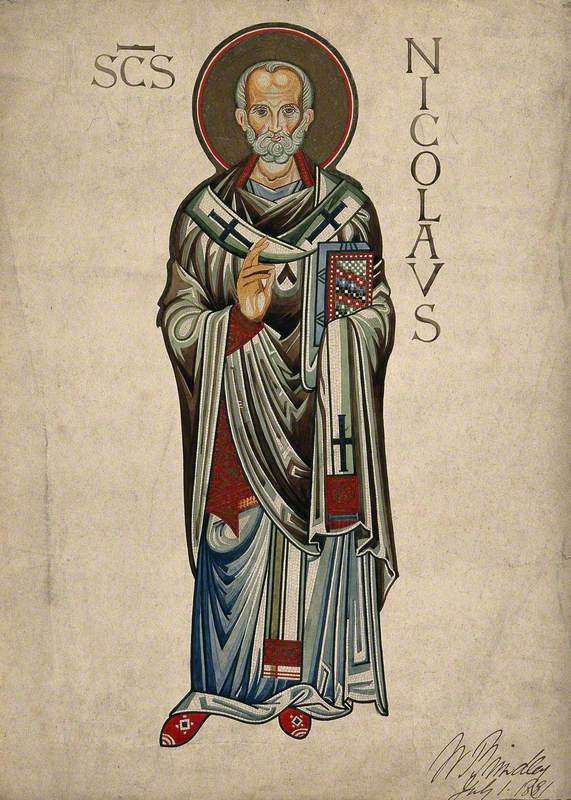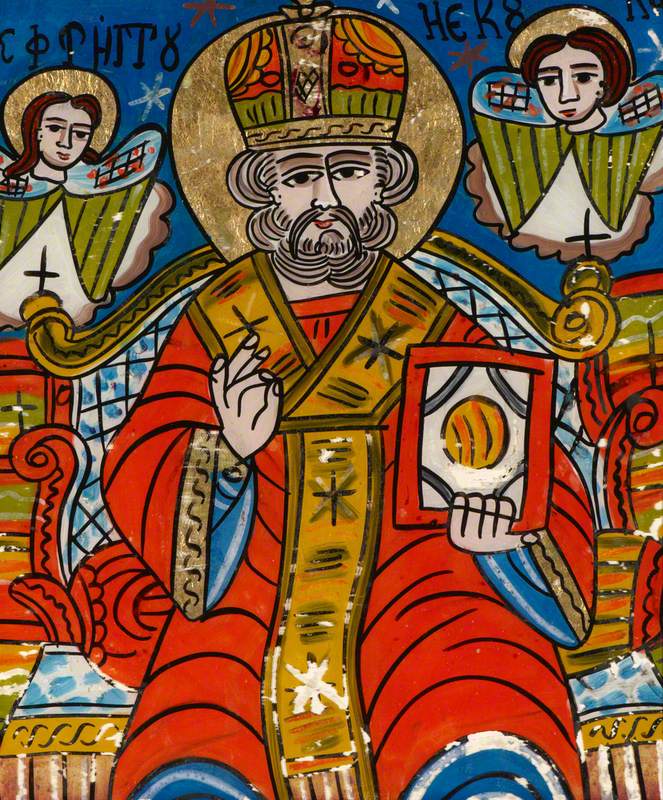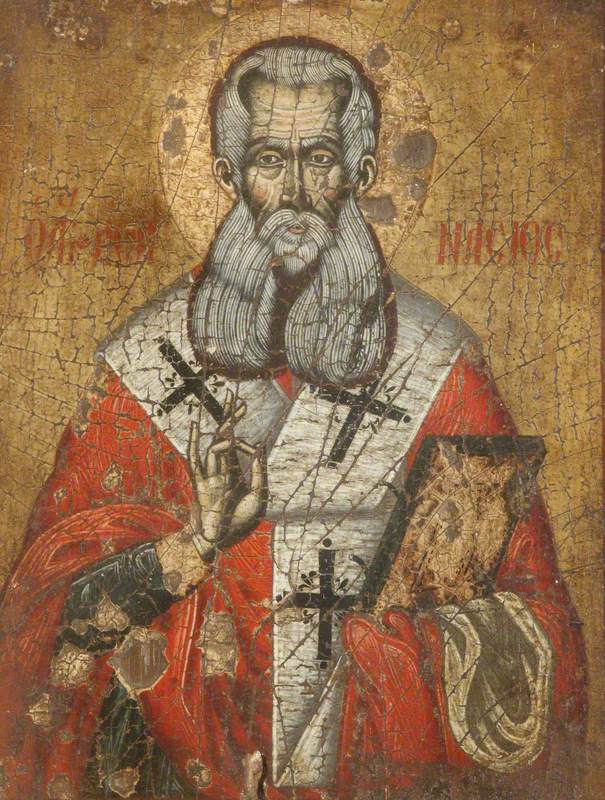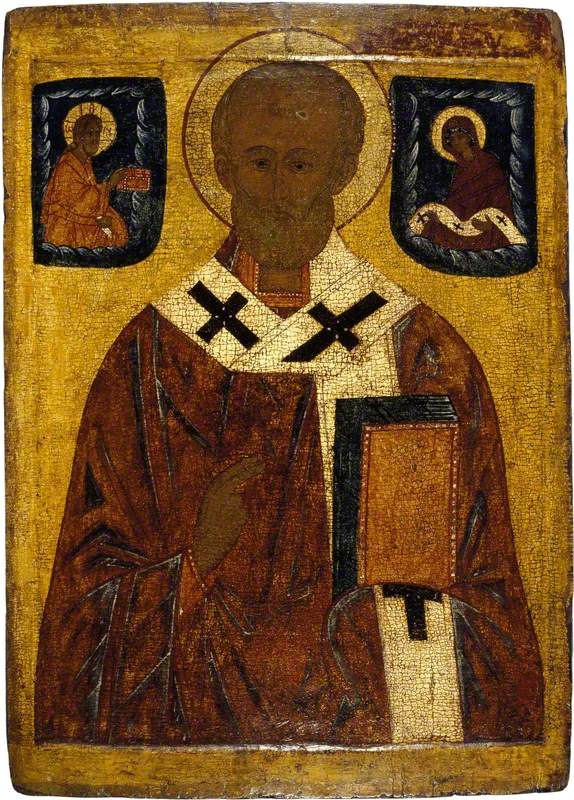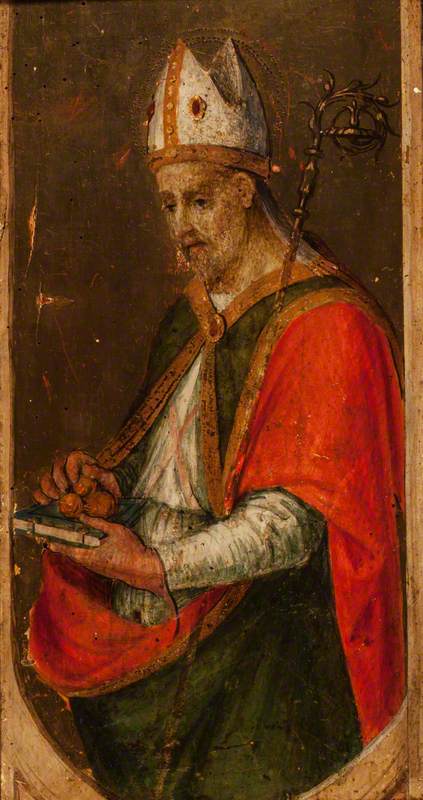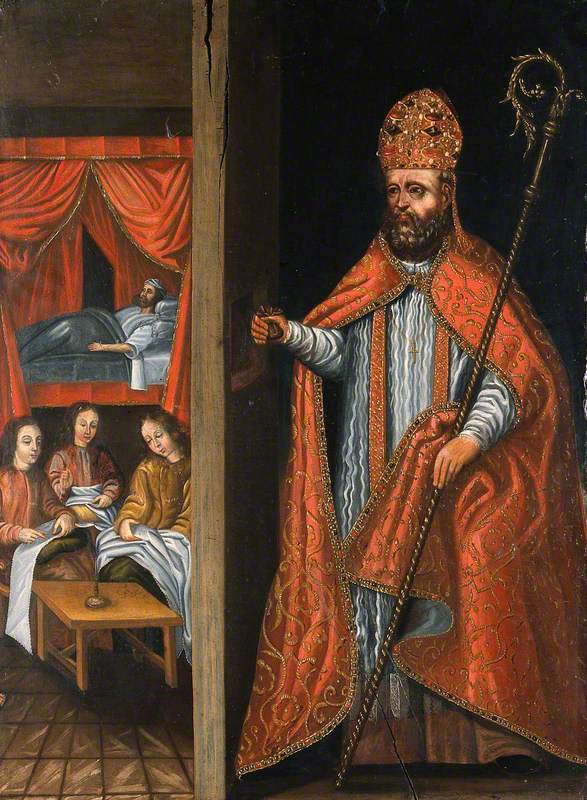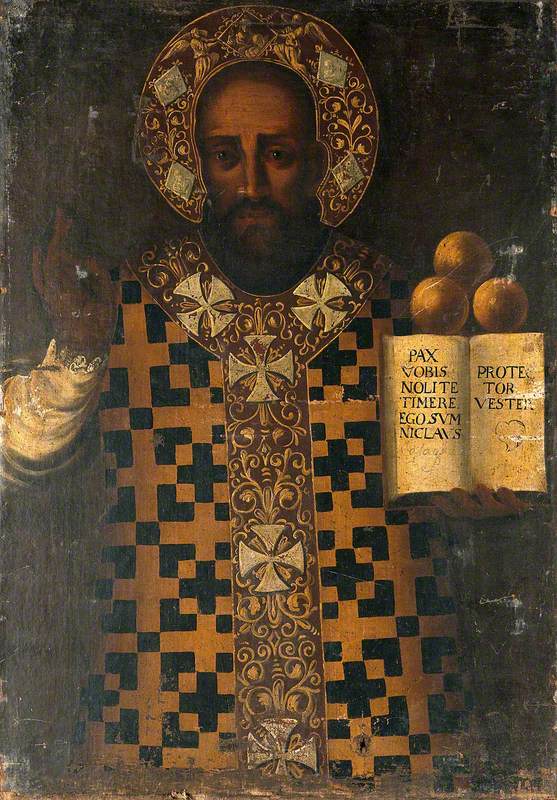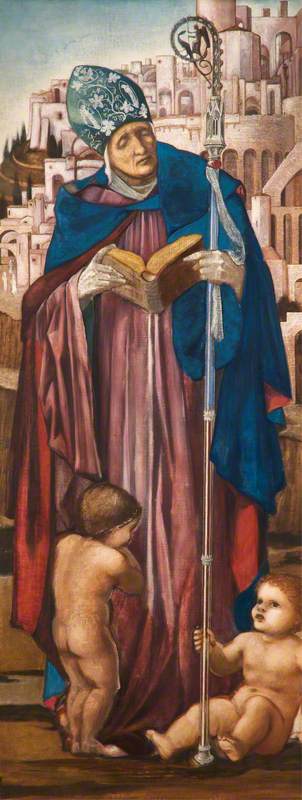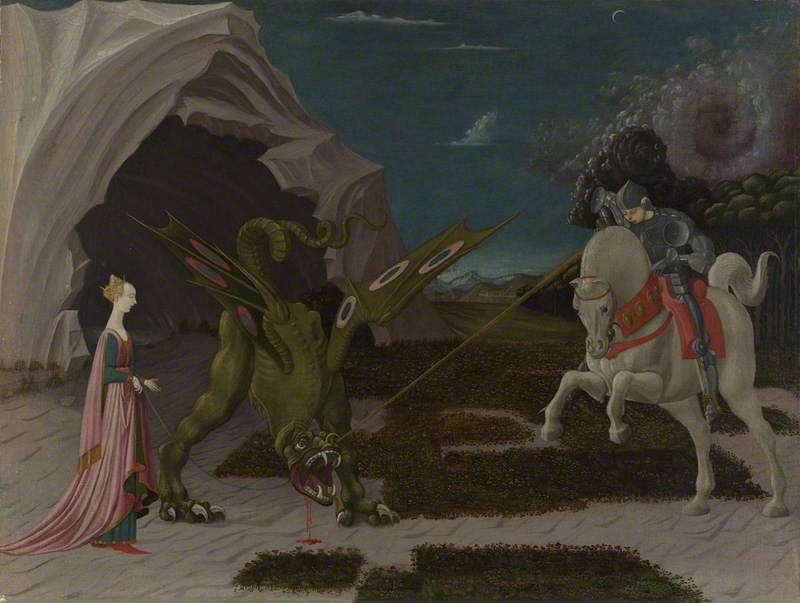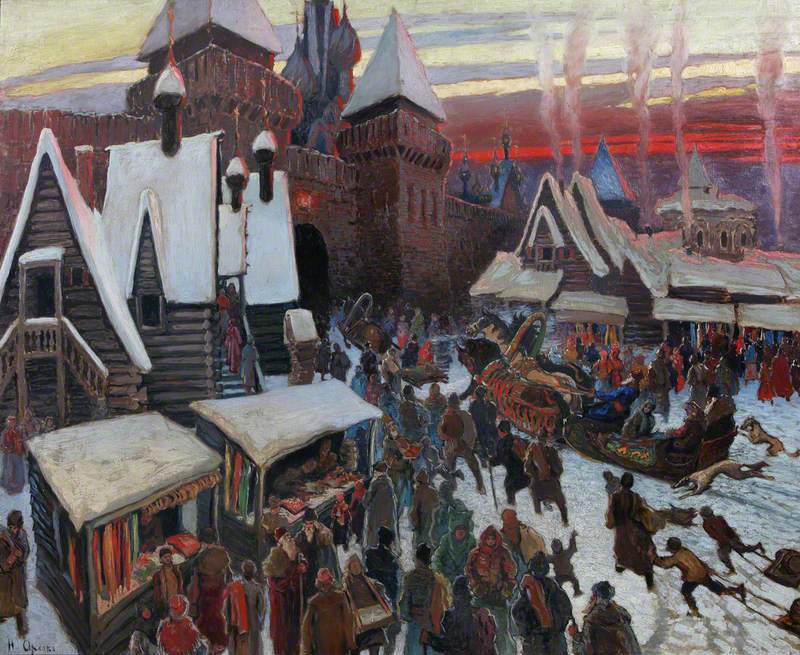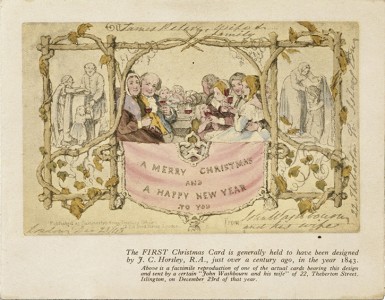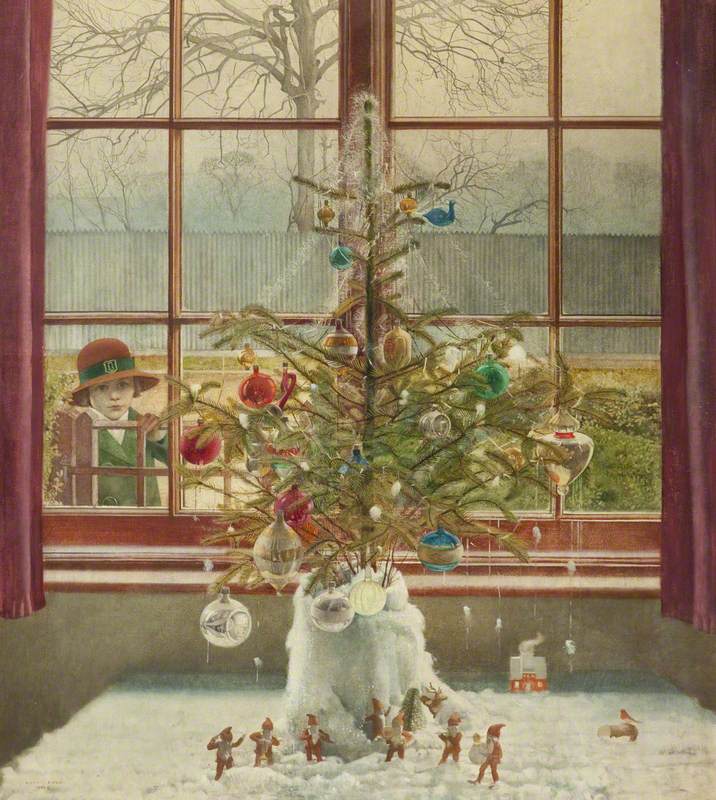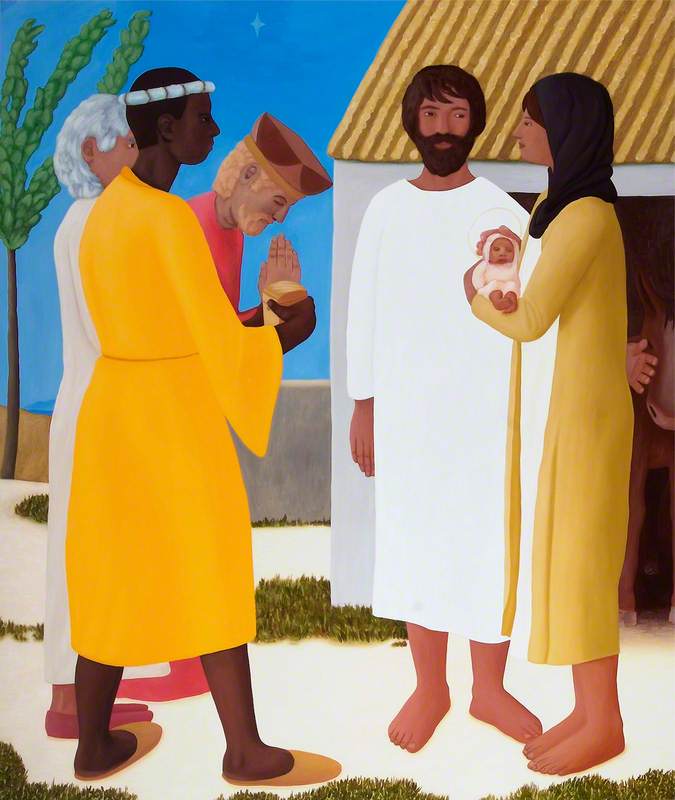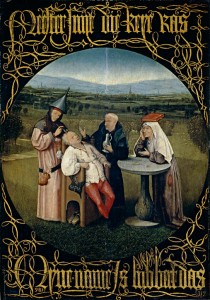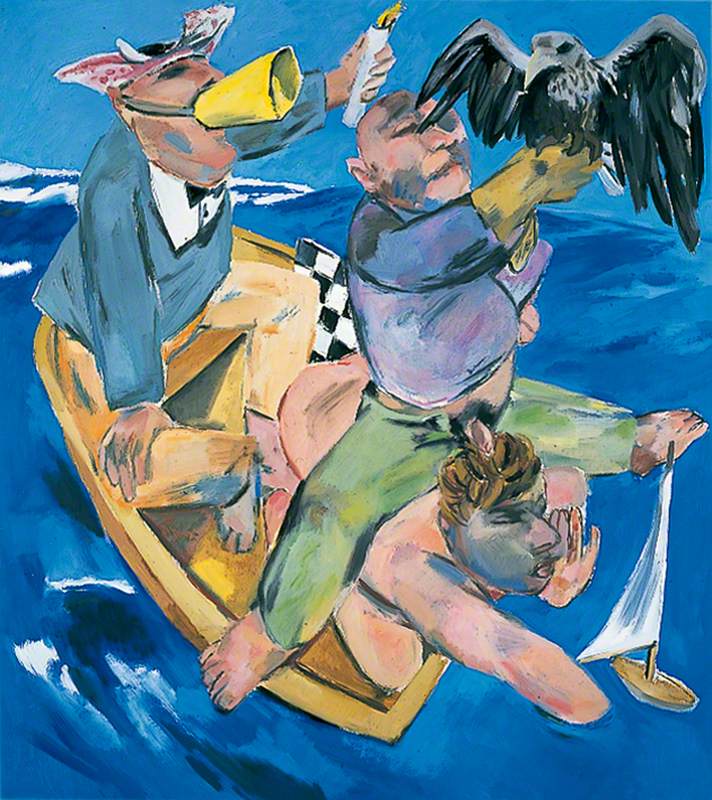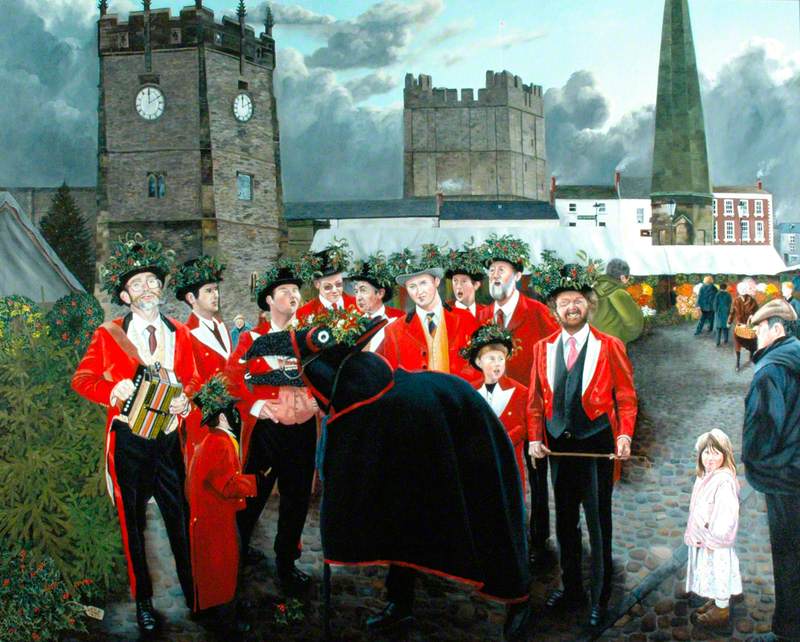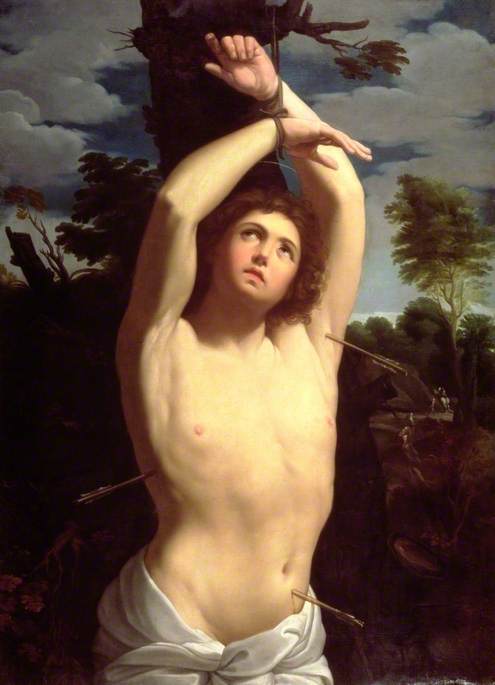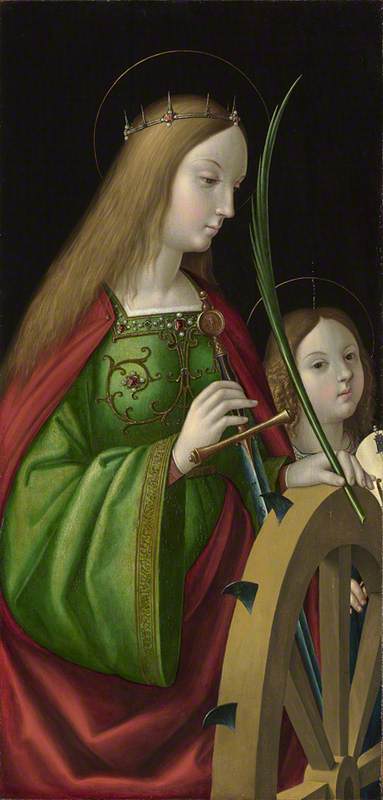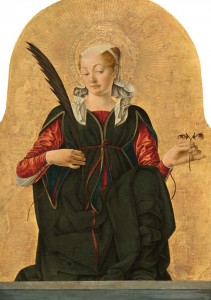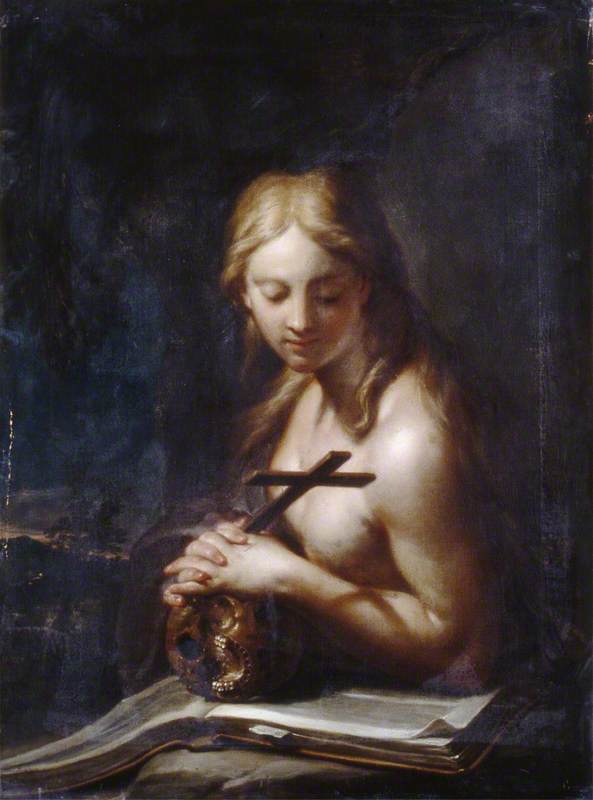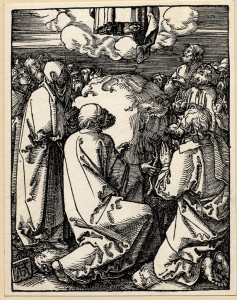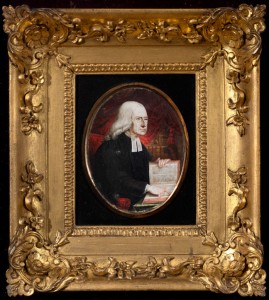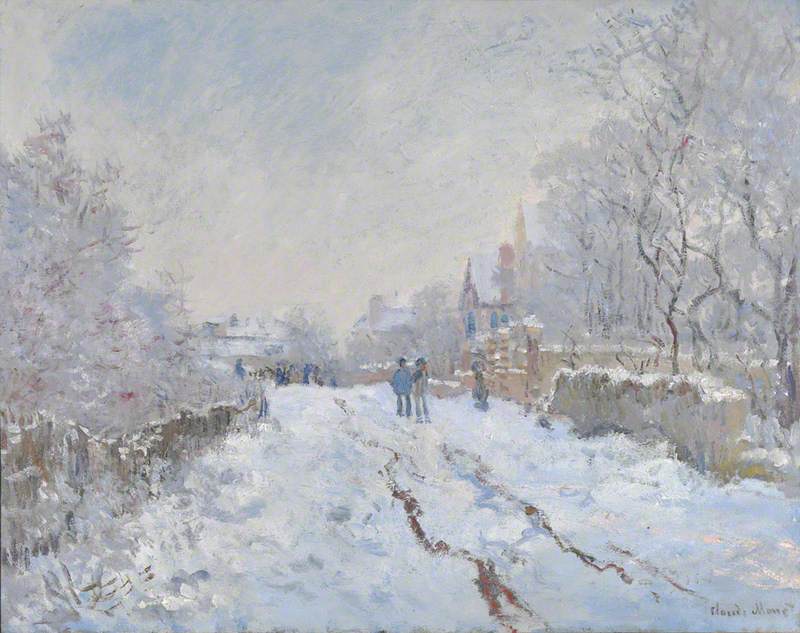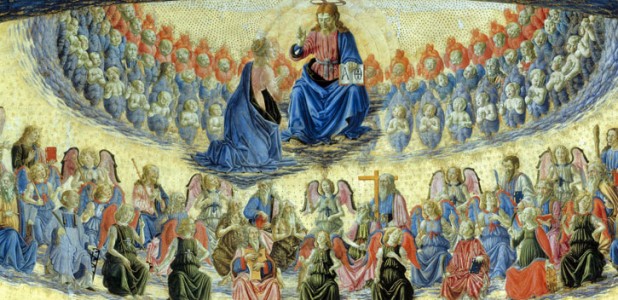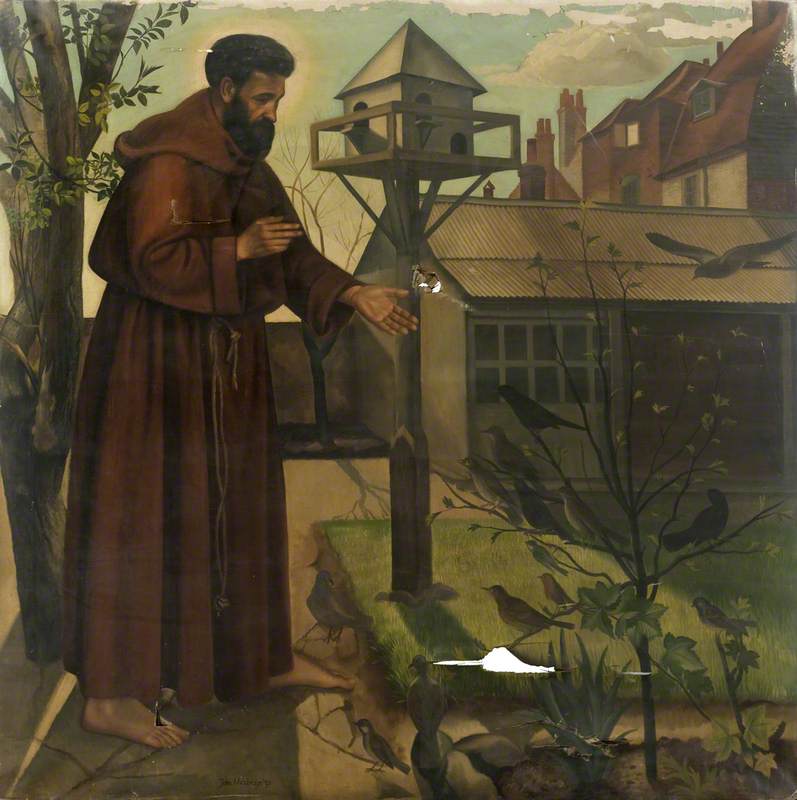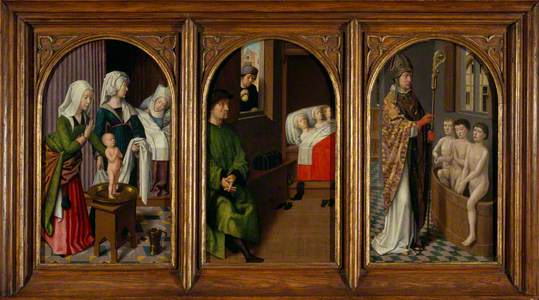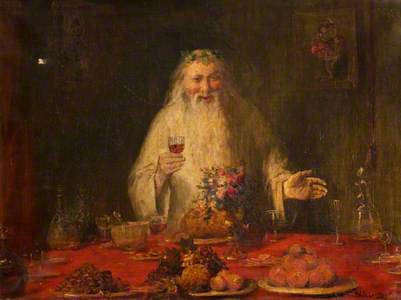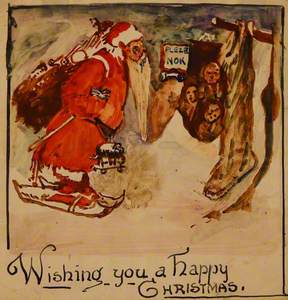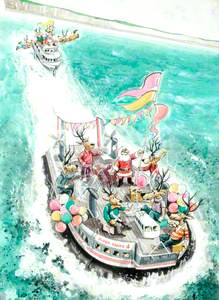Depending on where you live in the world, you might associate Saint Nicholas with a variety of different things – he's patron saint of (among other things) children, coopers, sailors, fishermen, merchants, broadcasters, the falsely accused, repentant thieves, brewers, pharmacists, archers, pawnbrokers, Aberdeen, Galway, Bari, Moscow, Amsterdam, and the Royal School of Church Music.
In the UK and USA, there is a general idea that he is somehow related to Santa Claus, but many people are not really sure how exactly a third/fourth-century bishop links to the guy with the reindeer in the red suit and white beard.
The short answer is that the figure of Santa Claus/Father Christmas is an amalgamation of many traditions, including that of the saint.
However, Nicholas was a real person, and a Christian saint, and his feast day is celebrated on 6th December, so here's a look at some of the depictions of him in art.
Which Saint Nicholas?
These days, unless you're a hagiographer, saints can be confusing. To start with, there is more than one Saint Nicholas, but the one we're after is generally known as Saint Nicholas of Myra or of Bari (Saint Nicholas of Tolentino does also feature in art, but we'll have to save his story for another day).
'Myra' is because that's where he was a bishop – it was originally an ancient Greek city in Asia Minor, in what is now Turkey. In the first few centuries after Christ, many of the cities where the Christian Church thrived were in the Middle East and North Africa. Myra was one of those bishoprics. Very little is known of the historical Nicholas's life, although traditionally he was thought to have been born somewhere near there in around AD 270 and died in Myra in AD 343.
But why 'of Bari'? Bari, in southern Italy, is associated with Saint Nicholas because of a holy theft in the eleventh century. At the time, the Church had recently split between the Eastern and Western branches – a division known as the Great Schism. It is why the Orthodox Church and the Catholic Church are different denominations today. In 1087, a group of merchants from Bari (in the West) decided to take the remains – known as relics – of Nicholas away from the East, as the (non-Christian) Seljuk Turks were encroaching on the region.
St Nicholas of Bari banishing the Storm
1433–1435
Bicci di Lorenzo (1373–1452) 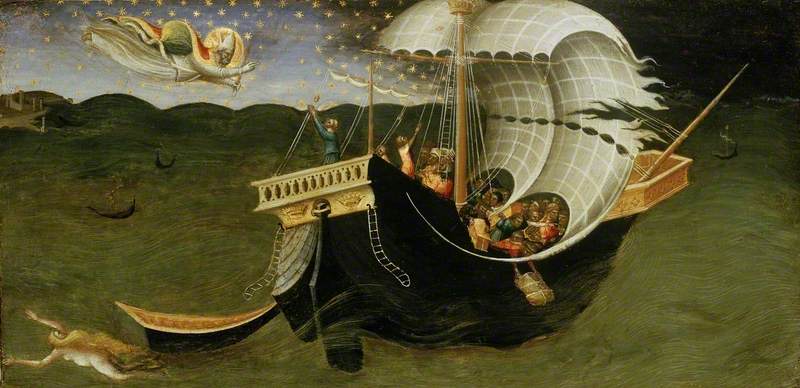
As you can see from the large number of Orthodox icons, he has remained popular in both east and west. In Russia in particular, he is known as 'the Wonder-Worker'.
Icon with Saint Nicholas the Wonder-Worker
17th C–18th C
Russian School 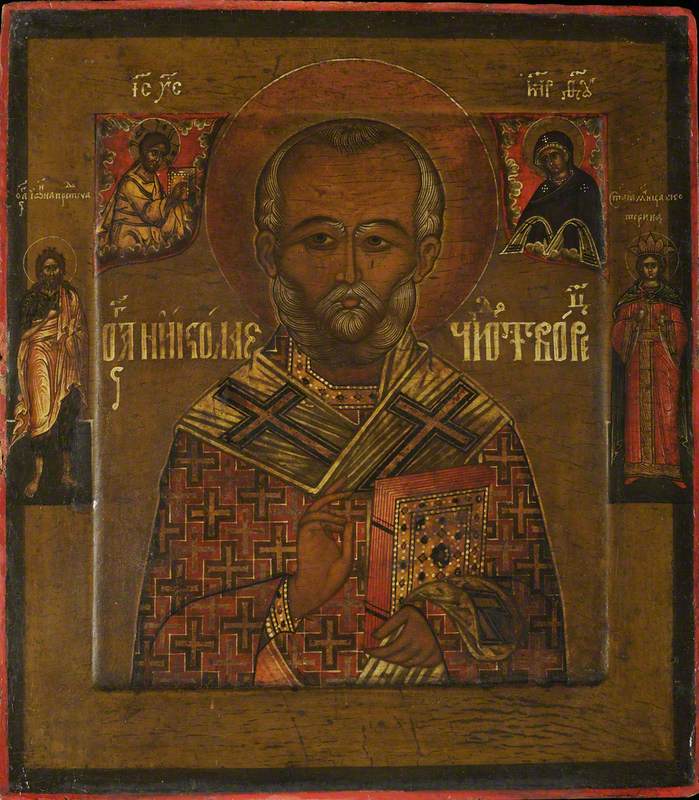
In medieval Italy, pilgrims to the Holy Land would collect 'the manna of Saint Nicholas' (a perfumed myrrh that his body was said to secrete) in leaden flasks before they left. As a result, he was the patron saint of guilds of perfumers, apothecaries and spicers.
Miracles and charity
Saints were usually associated with miracles. These are often apocryphal stories, often with a strong supernatural element. Saint Nicholas has a selection of great miracles that are told as part of his story.
The most famous is his great charity. The story goes that three sisters were so poor that they could not afford dowries. At the time, this would possibly have implied that they might have had to become prostitutes as they would not be able to marry.
The Charity of St Nicholas of Bari
about 1555-60
Girolamo Macchietti (1535–1592) (attributed to) 
Saint Nicholas heard of their plight, and he secretly threw a purse full of money through their window. He returned the next night, and did the same. On the third night, he was caught in the act of charity but ordered them to keep it secret.
In the saint's iconography, the gold purses became gold balls, and can be seen in this painting from the Wellcome Collection.
Pawnbrokers traditionally used the three golden balls as a sign outside their premises. Saint Nicholas is the patron saint of pawnbrokers, although there is some confusion over whether the sign could be to do with the banking Lombards or the Medici family, and not the saint.
Another popular legend of Saint Nicholas is pretty horrifying to a modern audience. It relates that he revived three murdered boys who had been killed during a famine, pickled, and intended to be sold as ham.
You can see the scene depicted on the right of this panel (the left and centre scenes are of him as a newborn baby miraculously standing up and praying, and the anonymous gift-giving of money to the three sisters).
Three Legends of Saint Nicholas
c.1500–1520
Gerard David (c.1460–1523) 
Although a popular motif in Christian art of the Middle Ages, the 'reviving the pickled boys' scene largely fell out of fashion in later times. It is unclear whether it's this precise story that Edward Burne-Jones is alluding to in this late nineteenth-century painting, in his recognisable Pre-Raphaelite style.
Saint Nicholas's frequent depiction with children only strengthened his later link with Father Christmas/Santa Claus.
So is Saint Nicholas Santa Claus?
Not really. The saint is known for charity and gift-giving. But across Europe, there are many winter traditions of giving gifts. In the UK, the person who was traditionally representational of the festival was called Father Christmas, an allegorical figure who perhaps had more in common with an old man representing the winter.
However, the Dutch Sinterklaas (from the diminutive of Nicholas: Klaas/Claus) became amalgamated with the British figure of Father Christmas over time. In English-speaking countries, he tends to come on Christmas Eve and distribute presents.
Elsewhere, traditions happen on different days, partly due to a move away by Protestants from the importance of saints during the Reformation – and with an array of sidekicks. From Krampus, Belsnickel and Knecht Ruprecht in Austria and Germany to the (now highly controversial) Zwarte Piet in the Netherlands, Saint Nicholas/Santa/Sinterklaas has a number of companions. Some of them dish out not presents, but coal or even beatings to wicked children!
In the UK and USA, we now think of Santa/Father Christmas in his red and white suit, reindeer and sleigh, bringing toys (and not punishment!) to children.
Here's an unusual take on this modern version descended from the saint – Santa on a hovercraft!
To misquote the famous 1823 poem, A Visit from St Nicholas, which cemented the idea (in the American mind at least) that Saint Nicholas was the definitive Christmas gift-giver:
But I heard him exclaim, ere he manoeuvred his hovercraft out of sight –
'Happy Christmas to all, and to all a good night!'
Although as Christmas is still a couple of weeks away, it is, like much of Saint Nicholas's story, all very confusing...
Saint Nicholas has remained a firm favourite in art through many centuries, and in many guises. It will be fascinating to see how his journey continues to unfold.
Andrew Shore, Head of Content at Art UK
